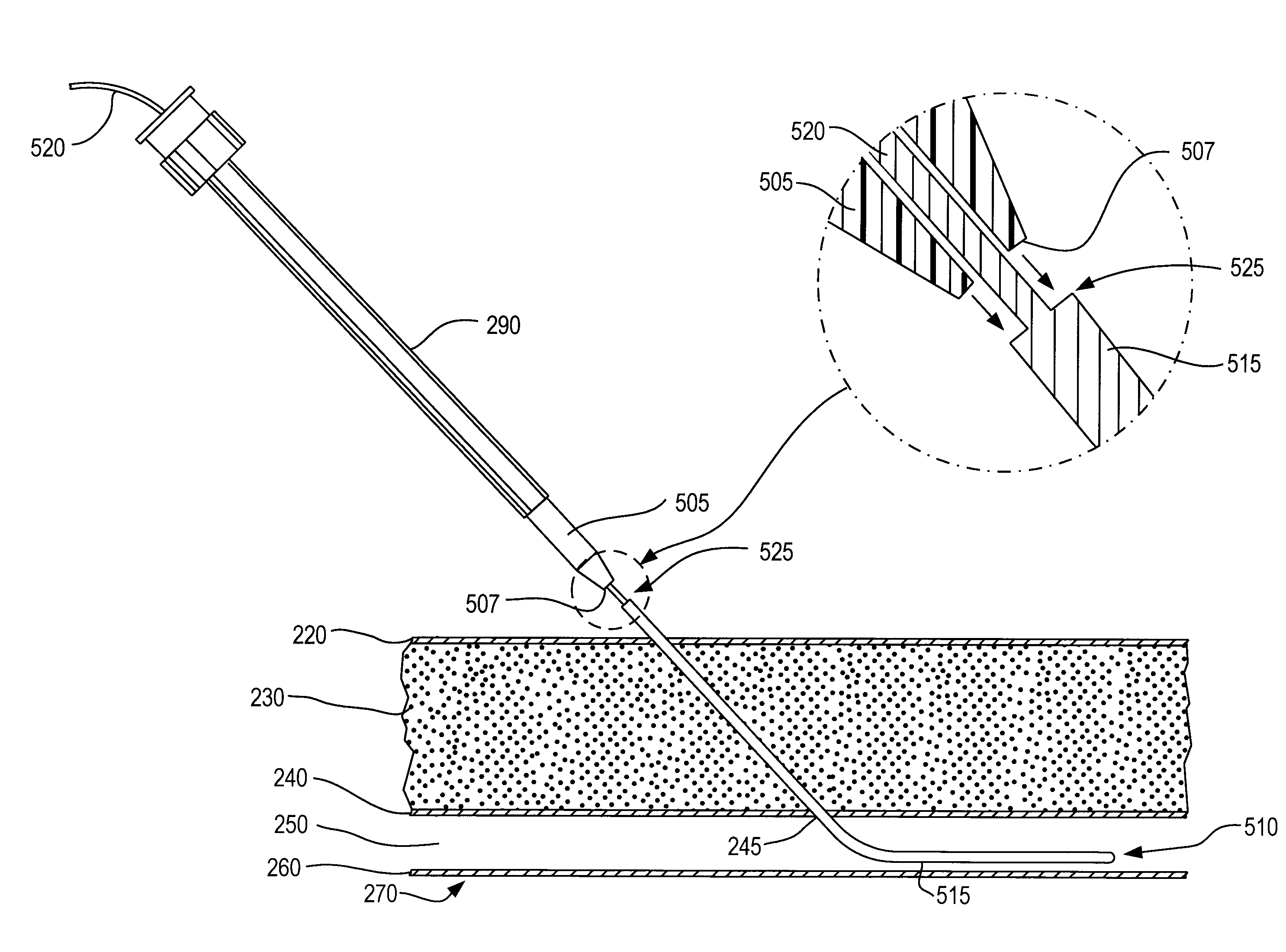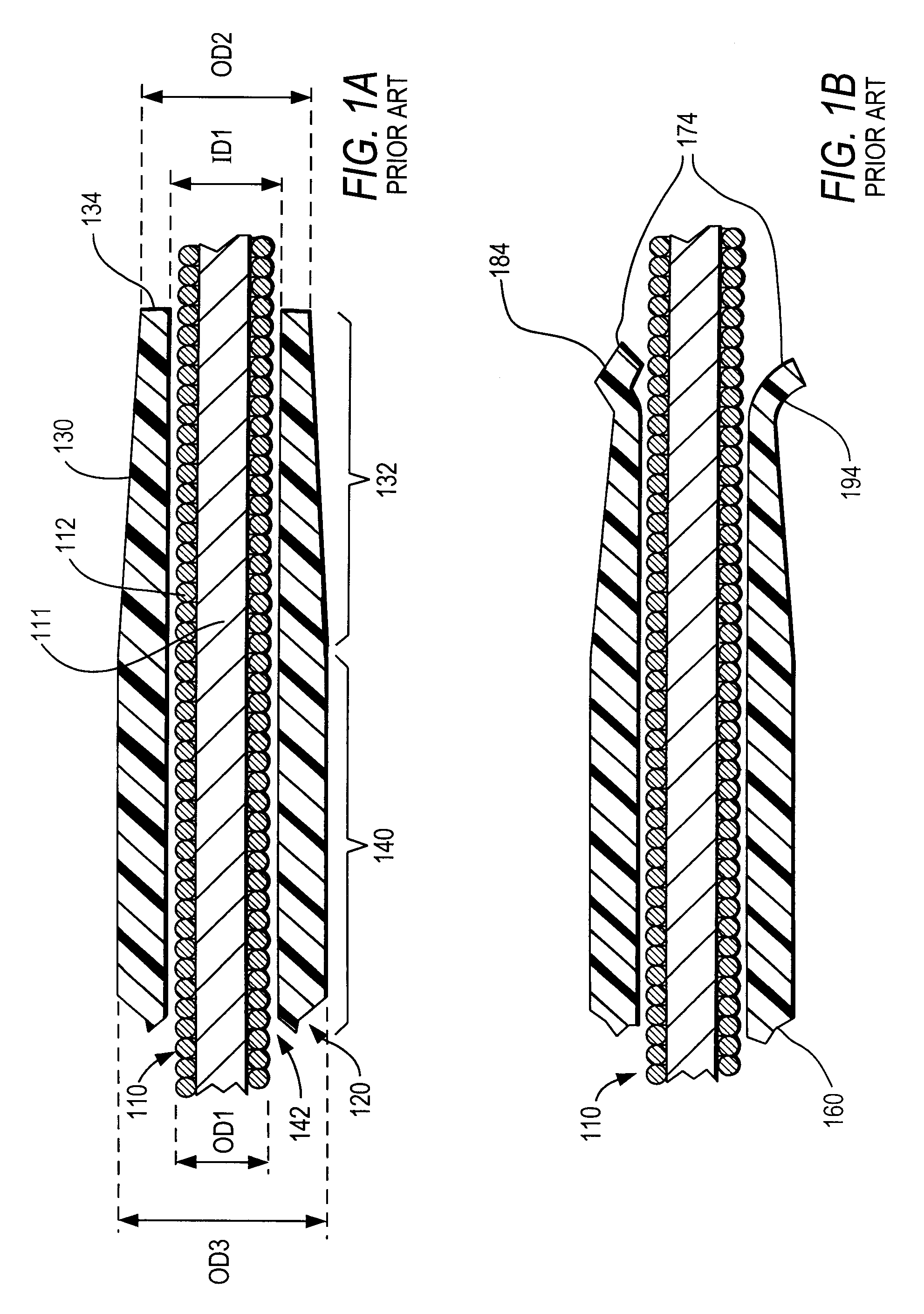Medical guide element with diameter transition
a technology of transitional diameter and guide element, which is applied in the field of new introduction of guide element, can solve the problems of more lengthy and difficult hemostasis, and achieve the effect of reducing the flow of blood and sufficient length and diameter
- Summary
- Abstract
- Description
- Claims
- Application Information
AI Technical Summary
Benefits of technology
Problems solved by technology
Method used
Image
Examples
Embodiment Construction
[0083]A first embodiment of a filament according to the present invention is shown in FIG. 4A. Filament 400 includes a proximal segment 405 and a distal segment 415 which at their juncture form an abrupt, circumferential step 410. Segments 405 and 415 may have the same or different configurations, but cylindrical configurations are preferred for both segments. Distal segment 415 serves multiple purposes: At its proximal end, it forms the abrupt step 410 which shields the distal tip of a dilator; its one or more regions of maximum diameter also block the backflow of blood through the needle, and also block the backflow of blood through the vessel puncture.
[0084]Proximal segment 405 has a maximum outer diameter 425 that is preferably substantially constant along the length of proximal segment 405. Distal segment 415 includes tip 420 and a cylindrical elongate portion 440 having a maximum outer diameter 430 that is preferably substantially constant along the length of cylindrical elong...
PUM
 Login to View More
Login to View More Abstract
Description
Claims
Application Information
 Login to View More
Login to View More - R&D
- Intellectual Property
- Life Sciences
- Materials
- Tech Scout
- Unparalleled Data Quality
- Higher Quality Content
- 60% Fewer Hallucinations
Browse by: Latest US Patents, China's latest patents, Technical Efficacy Thesaurus, Application Domain, Technology Topic, Popular Technical Reports.
© 2025 PatSnap. All rights reserved.Legal|Privacy policy|Modern Slavery Act Transparency Statement|Sitemap|About US| Contact US: help@patsnap.com



